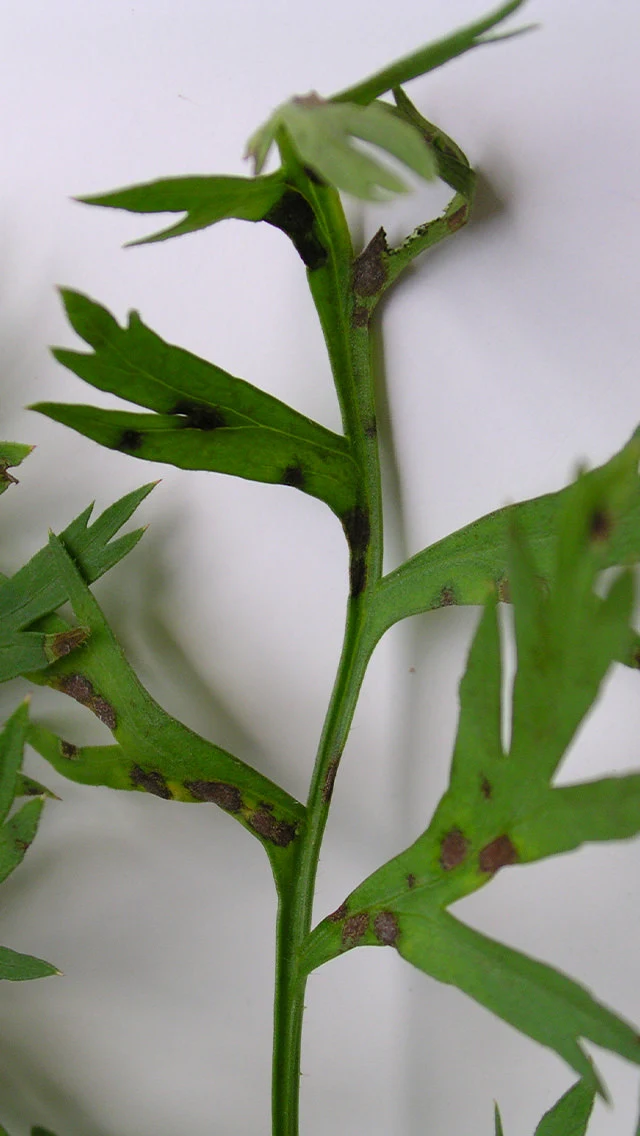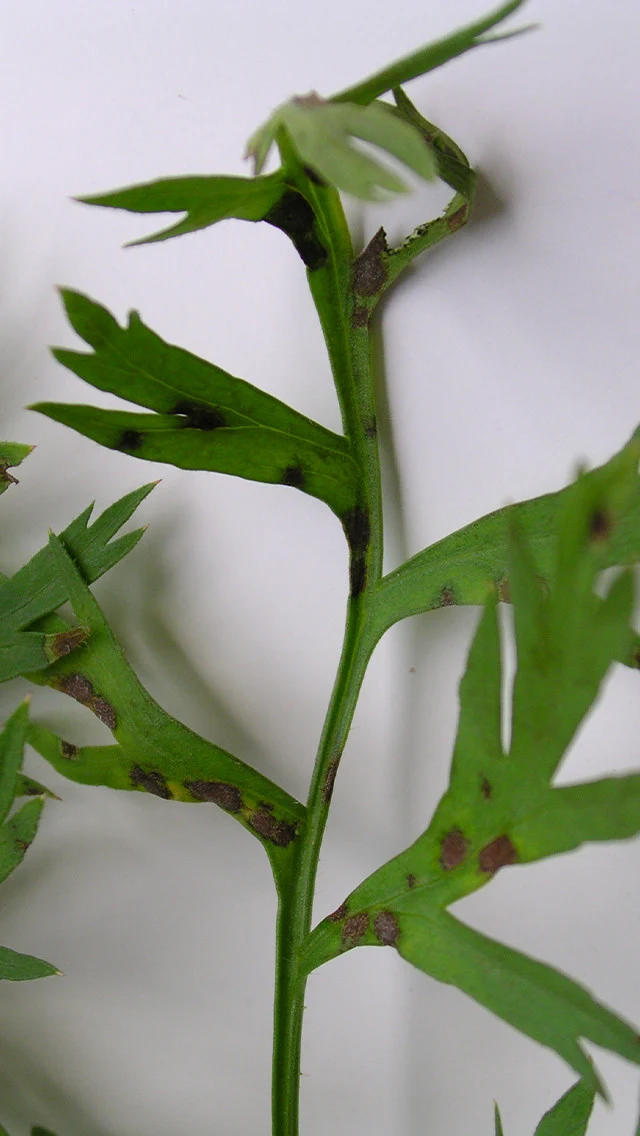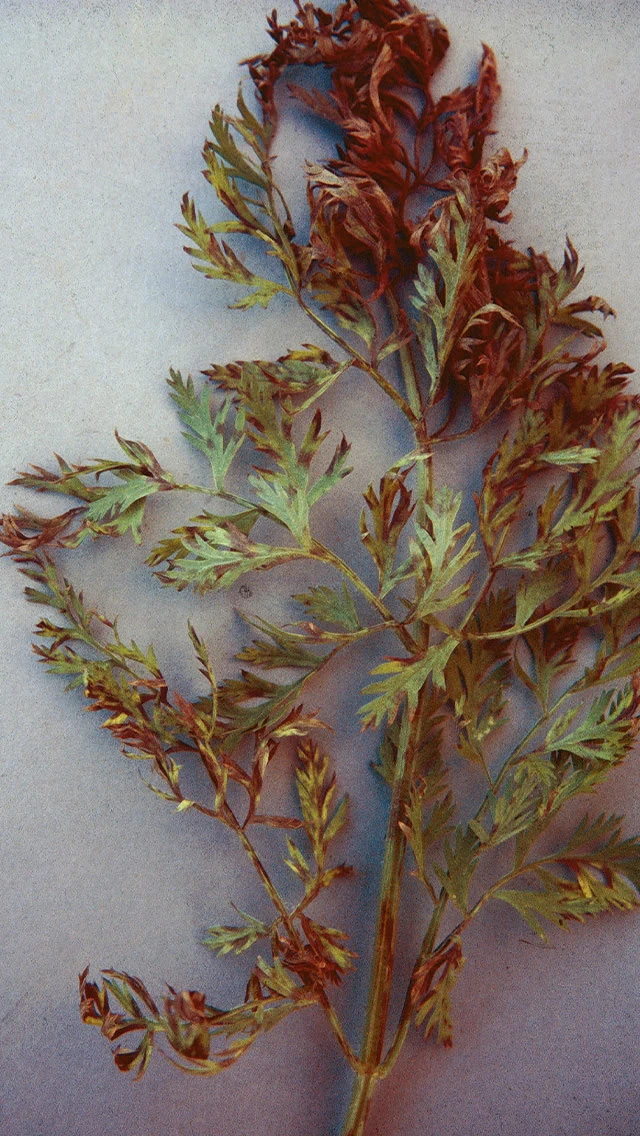
Cercospora Leaf Blight
Cercospora carotae

Cercospora carotae
Pathogen
Fungus
Hosts
Carrots
Symptoms
First symptoms are small water-soaked brown circular lesions on the leaflets with a chlorotic halo around the outside. The lesions on the petioles are oval shaped with tan centres and brown borders. Petiole lesions of Alternaria are brown and irregular shaped.
With bacterial blight the lesions do not cross leaf veins.
Difficult to distinguish from Alternaria leaf blight and both diseases can occur at the same time. One of the main distinguishing features is that Cercospora can be found on younger rapidly growing plants whilst Alternaria leaf blight is more commonly associated with older plants.
As the disease develops whole leaves curl, shrivel and turn brown.
Like Alternaria, this fungus does not invade the carrot roots.
Development
Seed borne disease.
Overwinters on crop debris and other host plants. Once established spreads by both wind and rain splash. With prolonged leaf surface moisture, spores can penetrate the leaves via the stomata.
Favourable factors
Warm, humid weather.
Importance
An important disease of carrots in Northern Europe, the USA and Canada and first confirmed in the UK in late 2005.
Damage to the leaves can cause harvesting difficulties when `top lifting` particularly where infections arise early in the season.
Control
Clean seed
Disease tolerant varieties
Rotation of up to 3 years.
Removal of crop debris
Protect with fungicides at the first sign of disease establishment

Early symptoms (© ADAS)

Severe disease pressure (© ADAS)


